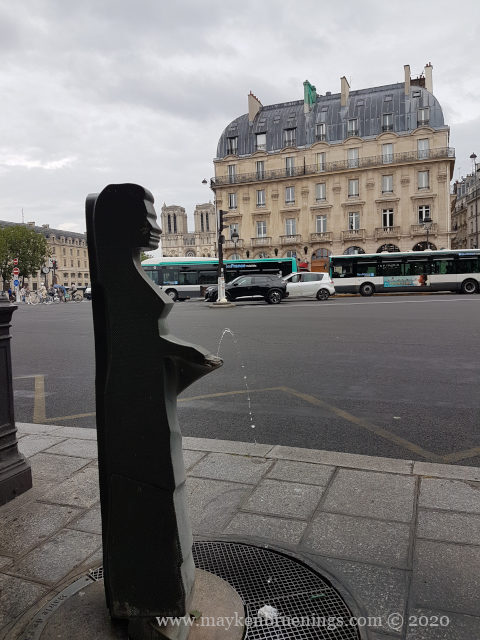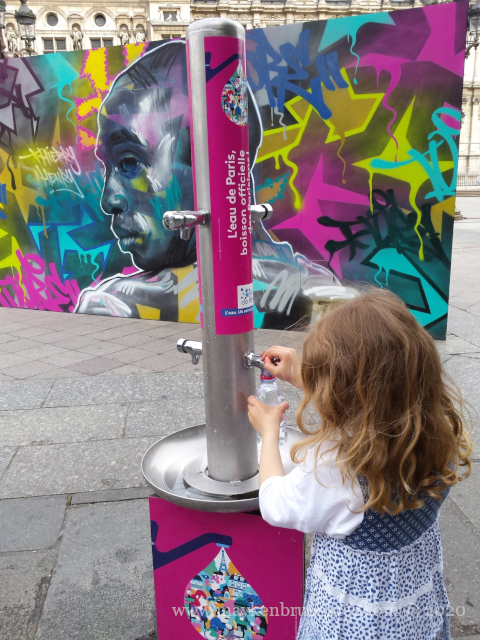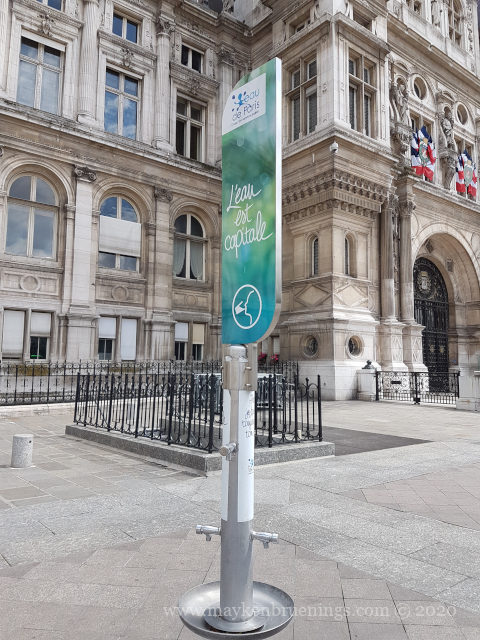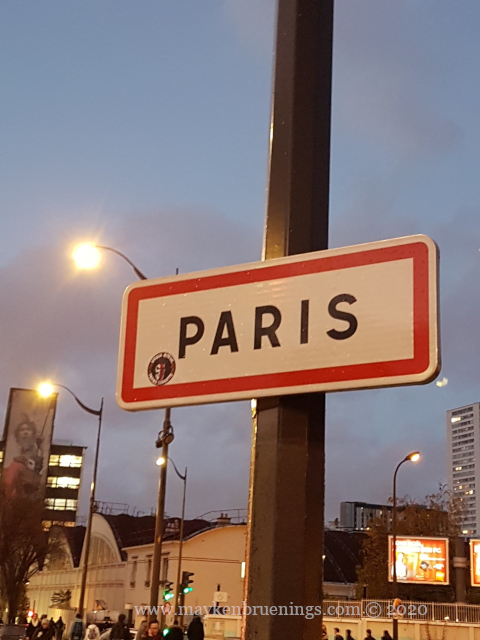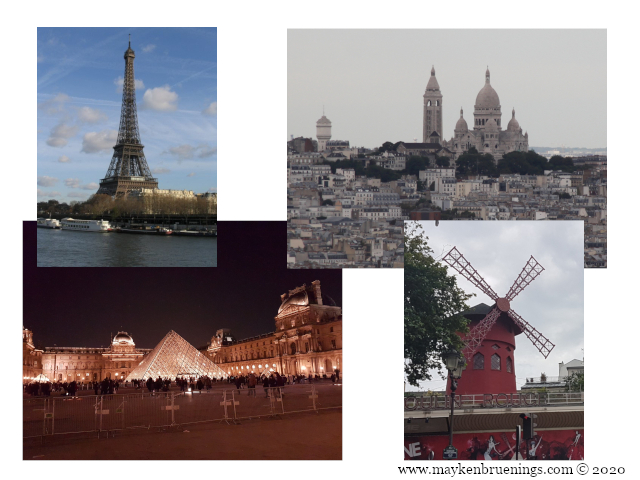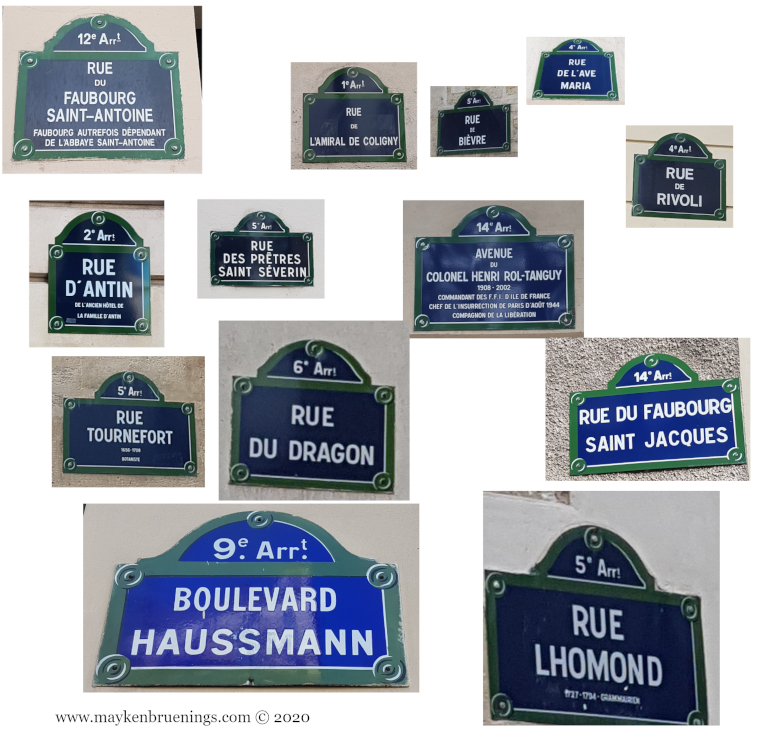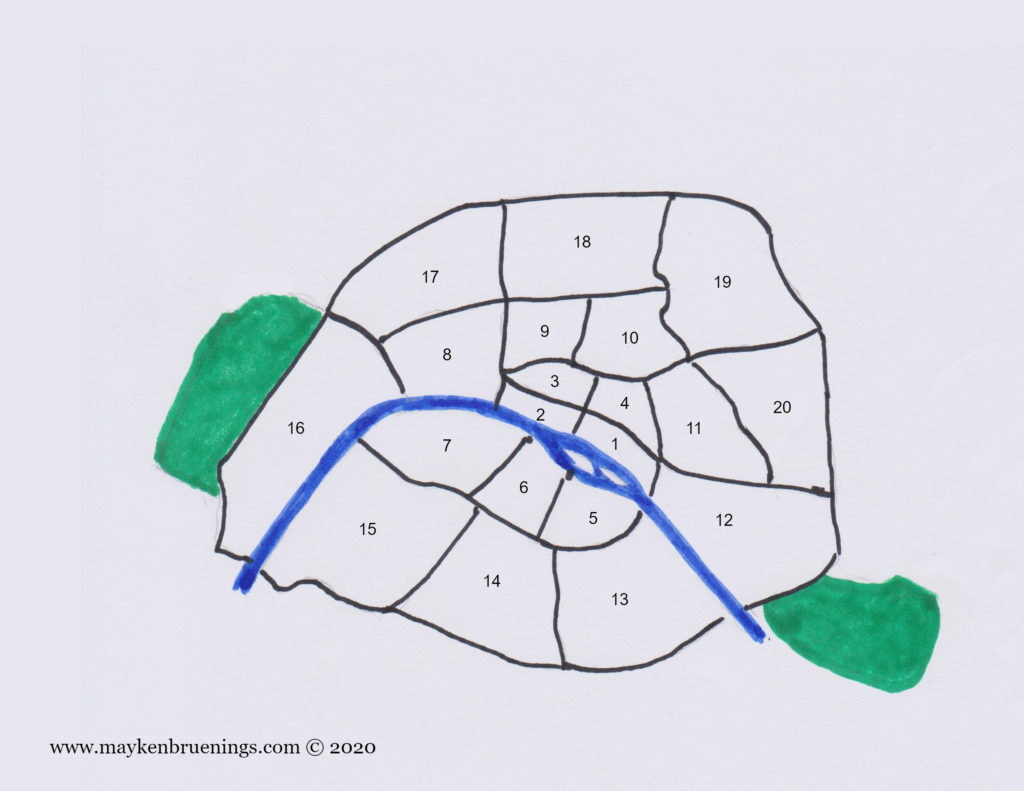Tourists in Paris might be suspicious when they come across these historic water fountains. Can you really drink the water trickling down between those four statues?

Yes, you can. The water is perfectly safe. Just hold your water bottle underneath the trickle, and all you need a little patience because the flow isn’t very strong.
But why have these old-fashioned fountains instead of modern ones which are more easily accessible and allow for a stronger flow?
Oh, but we have those too.
These old-fashioned fountains have a long history behind them. Let me tell you.
Once upon a time, there was a rich Englishman with French roots, who saw the difficulty of supplying water to Paris following the 1870 siege of the capital. He offered to provide 50 drinking water fountains and asked the mayor to accept this donation.
The name of this philanthropist was Sir Richard Wallace. His heritage is still visible in the urban landscape of Paris today, and the fountains are called Wallace fountains in his memory.
There are four different types of water fountains, and all four can still be found around town. They supply potable water from 15 March to 15 November but are turned off in the winter to prevent freezing and bursting pipes.
The model you will see most is quite large, which was meant to help people spot it. On a pedestal stand four caryatids with their backs to each other, holding up a pointed dome. The water trickles down in the center non-stop day and night.
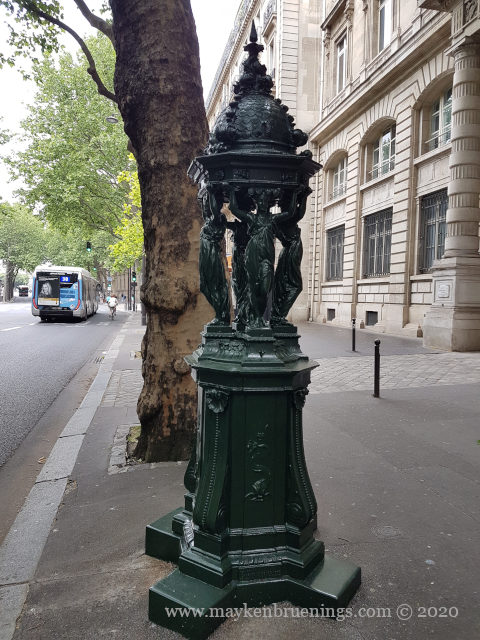
This model was inspired by the Fontaine des Innocents.
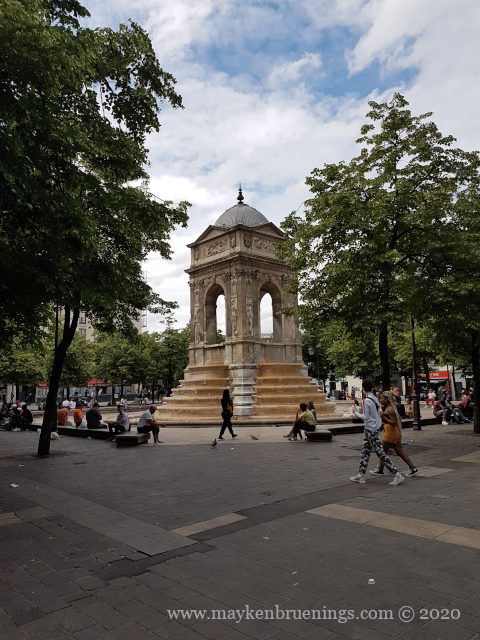
There used to be two tin-planted iron goblets on small chains but they were removed for hygiene reasons in 1952.
The second of Sir Wallace’s models was a wall-mounted fountain where the trickle of water falls from the mouth of a naiad into a basin. These were cheap to install and should have been mounted in large numbers on the walls of buildings such as hospitals. It didn’t happen, though, and today there remains only one of these, rue Geoffroy Saint-Hilaire near the Jardin des Plantes entrance.
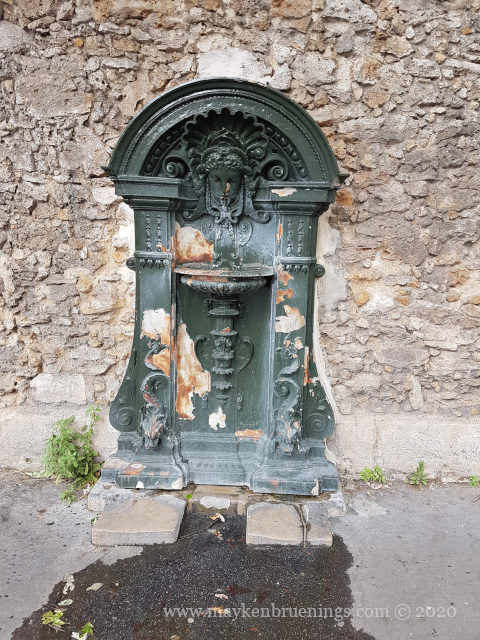
There are also two small versions. One is very common in public parks, a simple push-button fountain, well-known to parents and nannies who bring their kids to play.
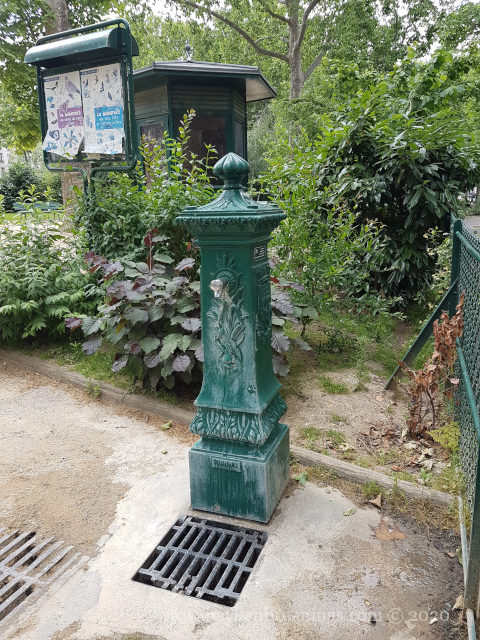
The last model is a small version of the caryatid fountain, with slender columns replacing the statues to reduce the production cost.
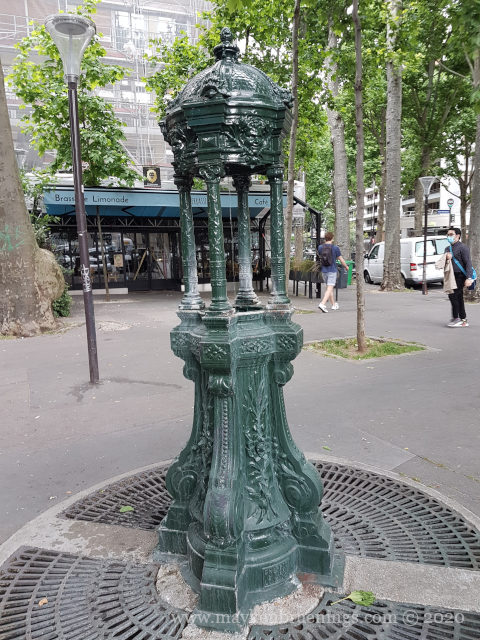
The fountains are all painted the same colour, a strong green, required by the city of Paris to match their other street furniture. Today, some of the fountains have been painted in different colours, but the majority is still green.
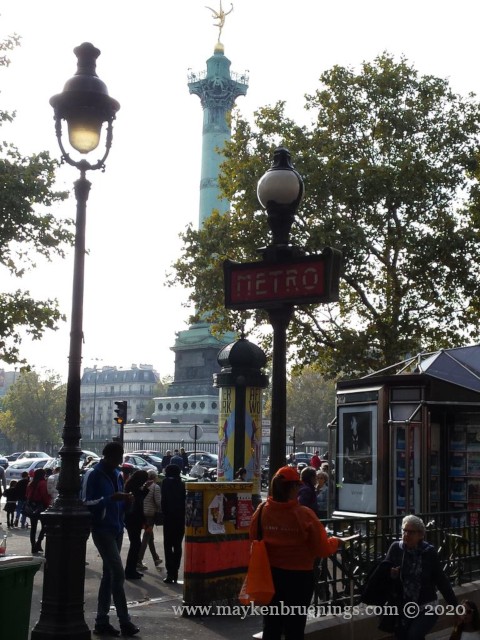
Many homeless people drink from the fountains even today, as they are one of the rare free points of access to water. So the legacy of Sir Richard Wallace lives on, 130 years after his death.
Official map of drinking fountains in Paris (Eau de Paris website)

